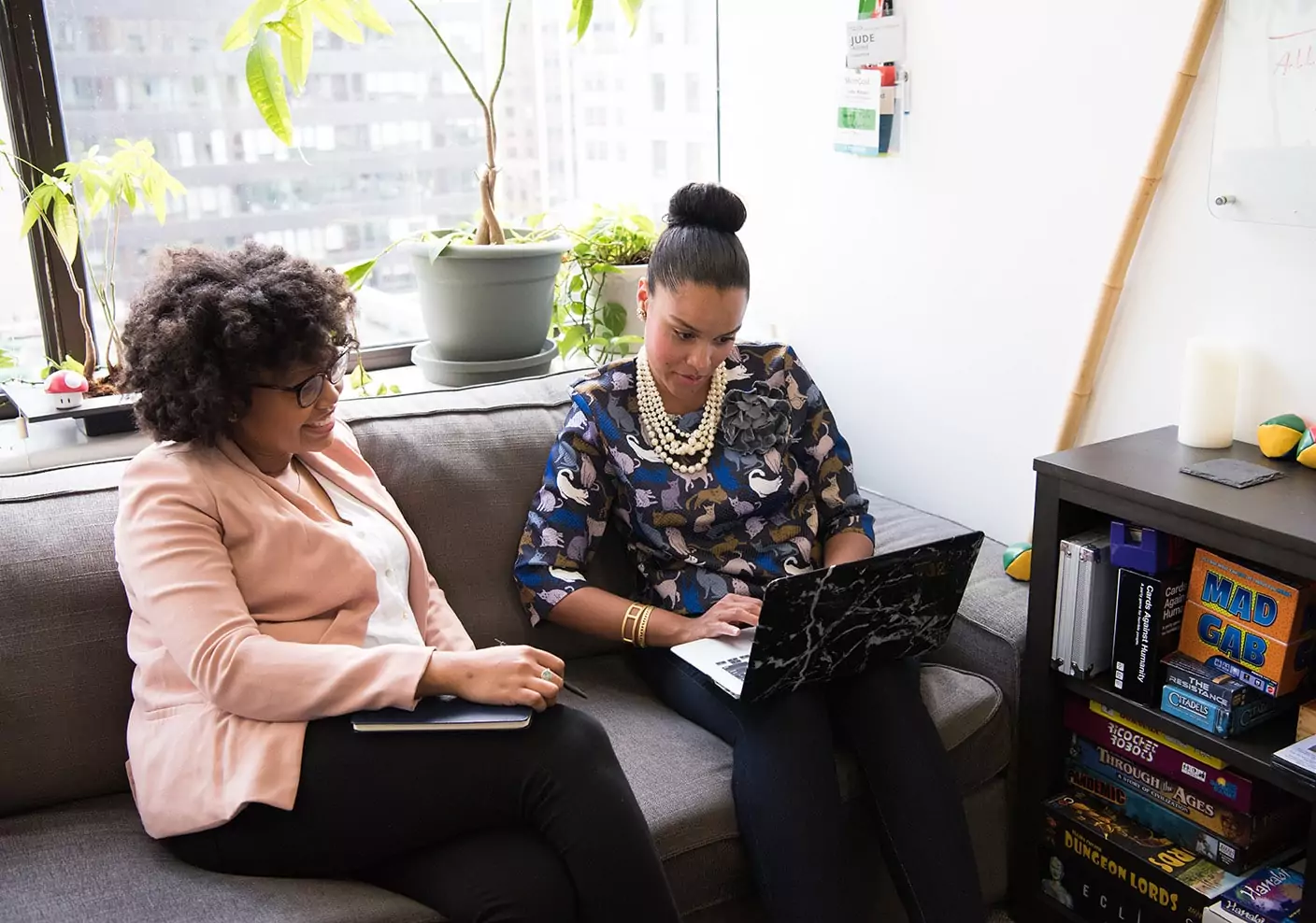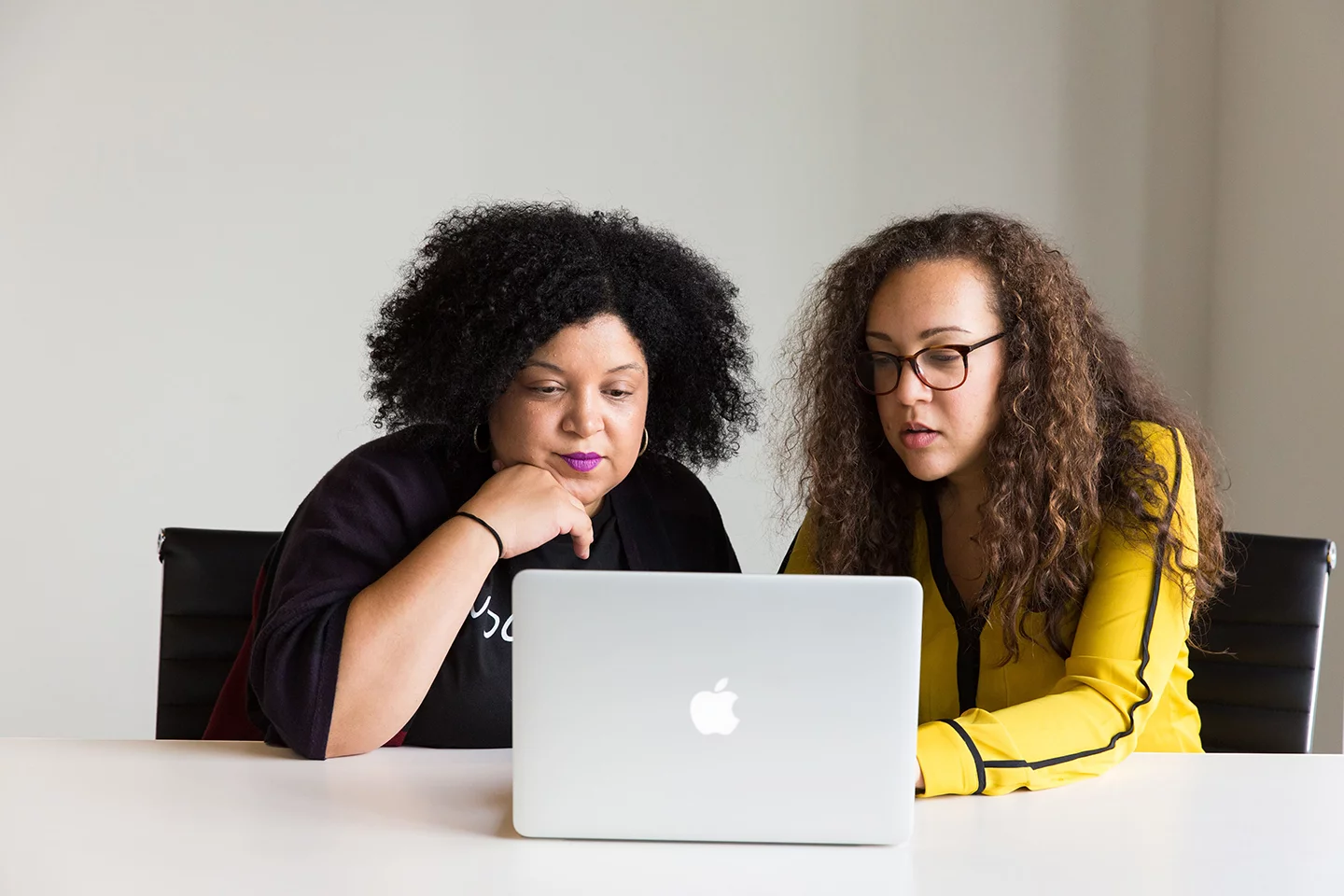Our 2021 Future of Work Virtual Roundtable Series continues with a session with Dr. Celine Mullins, CEO & Founder of Adaptas. Adaptas is an L&D organization that develops people and teams through executive coaching, bespoke learning workshops, and more. In “Hacking Your Brain to Maximize Personal and Professional Potential,” Mullins took us through her proven process for changing habits and improving soft skills.
Below is an excerpt of Mullins’ presentation, and you can view the full session on our YouTube channel. Join us for our upcoming Future of Work sessions by signing up here. And, to experience Mursion’s virtual reality simulations and see for yourself how this platform can support your own business to achieve its leadership development and other business goals, schedule a demo today.
“What I would like to do to start here is to ask you to just take a moment to think about the last year. Think about one thing that you have learned or a habit change you have made. Something maybe even that you’ve always wanted to do, but that you held off doing until this past year because of how our lives changed. I just want you to get one thing in your mind that you have done differently in this past year.
Now I want you to think about, if you can, close your eyes. I want you to consider the feeling in your body when you think about that thing that you have changed that you have been successful at over the last year.
I want you just to connect in with when you think about that thing that you’ve been successful in, that you’ve made that change in, where in your body can you feel that feeling? Is it in your chest? Can you feel your chest opening? Is it in how you’re breathing? Is it lower down in your abdomen or in your belly? Is it maybe in your fingers? Can you feel a tingling in your fingers? Maybe you can feel something across your shoulders when you think about it. maybe there’s something around your head. Maybe there’s a feeling of cold or heat in your feet.
As a psychologist, and working with people all the time, I am intrigued about this area and the various brains in our body that we need to try and connect with to make the changes that we want to make.
Maximizing Our Personal and Professional Potential
For our session today, if you want to really maximize your potential, whether it’s in your professional or your personal life, that is going to require every single one of us to make changes because we’ll all have different changes that we need to make to get to our potential.
What I want us to think about today is that the brain and the body, it’s built to block us from change, that there are obstacles that are there to us making change. By making them more conscious, we can actually hack and overcome those obstacles to get to where we want to be.
We’ve all had the experience of, in adulthood, especially, in attempting to learn something new or change a habit or reach our potential in some shape or form and falling short of making it stick for ourselves long-term. Learning, change, reaching our potential. When we were children, we didn’t care so much and we just seem to learn and grow and take things on. Obviously, a lot of that has to do with how our brain is spongy, how our pathways are being created when we’re children. As adults there is obviously, our neural pathways, our habits are really stuck down, but also, as I say, there are a lot of obstacles that we create for ourselves and that others create for us that get in the way of us reaching our potential.
Hacking Your Brain
A really good starting point is to think about how our brain was designed for survival in a world of danger and uncertainty. We are programmed to look to be in control as adults. We’re programmed to amplify and really focus on the negative. We’re programmed to do more of the same because change, doing something different spells danger to our brain and body.
We’re also programmed to prepare for the worst. You might recognize this in yourselves as the fight, flight, or freeze. Think back to when you’ve tried to do new things or overcome a well-worn obstacle in your life, we tend to go into the fight, fight, or freeze. Sometimes, we’re consciously aware of it, because we can see, say, the stories that we’re telling ourselves, but sometimes we’re not consciously aware of it. That’s when we start procrastinating and we start prioritizing other things over what we want to do.
The thing is that, so many of our habits, so many of our patterns, so many of our beliefs about ourselves are unconscious. When it comes to us reaching our potential, a lot of the things that are going on under the surface are what blocks us from reaching our potential. Today’s session is about unearthing them.
What we want to do is think about some of those older parts of the brain that are blocking us from making the changes that we want to make. Specifically, the area of the brain that stores our habits is called the striatum, and it’s an area within the basal ganglia which has been discovered and that’s where a lot of our habits are stored. Therefore, when we’re trying to actually make change to reach our potential, we’re having to overcome the habits that are stored in that area of our brain.
Removing Obstacles to Reaching Goals
When I mention the fight, flight, or freeze, if at this point you can identify in the past when you’ve looked to make a change and you haven’t succeeded or you’ve looked to really build your own confidence or get better at communicating or better at having difficult conversations or maybe learn a new computer programming language, whatever it is for you, I want you to think about at this point in time can you think about maybe that you have gone into fight, flight, or freeze that you’re consciously aware of?
As I said, that might show up as procrastination and might show up as you’re telling yourself stories about yourself and why you’re going to fail. I want you to just reflect on that for a moment because we’re going to try and uncover this a little bit more. What I’d like you to do is really think about the obstacles.
I can tell you something after working across so many different organizations and so many different sectors over the years and with so many different people at different levels, you wouldn’t believe how many people are, even the most confident people who are blocked by fear. It’s part of being human. We have all these external obstacles or derailers and they can be as simple as our emails that keep coming into our inbox.
Then, we have time which — I always think time is kind of an external and internal block because as an external blocker it feels like it’s outside of our control. As an internal blocker, we all have the same amount of hours in our days but we just all use them differently. The internal blockers then, you’ve already started mentioning some of them through that fear piece. Our internal blockers and obstacles to us reaching our potential can be things like self-identity, limiting beliefs, our values, our needs, our feelings and there’s many other things we could add to that list.
Today, really what I want to do is talk to you about the limiting beliefs that we have. These limiting beliefs or these stories are there and they creep in in all sorts of different ways.
That fear of not being accepted or being humiliated by other people is huge for a lot of us. A lot of us tell us ourselves those stories that others are stopping us from getting where we want to be. Sometimes, it’s about people that are different to us find things easier than us.
That feeling of not being worthy is there. All these different stories and these limiting beliefs that we tell ourselves. The thing is that sometimes, we’re very aware of those stories and sometimes they are bubbling under the surface and we’re not even aware that we’re thinking that at the time, but it’s causing us to procrastinate. It’s causing us to prioritize other things or other people and it’s stopping us from doing what we want to do and to be where we want to be.
The Power of Attraction
What we’re going to do now is start thinking about the hacking and actually overcoming these obstacles, and in my work it’s been really, really interesting to look at the intersection between psychology, coaching, neuroscience in various different areas that swim around those areas. It’s what we call the negative emotional attractor and the positive emotional attractor.
The negative emotional attractor is where we go to when we are feeling challenged, when we’re feeling blocked, when the obstacles come up and the positive emotional attractor is the feeling of possibility, the feeling of anything is possible here and the creativity that goes with that.
The negative emotional attractor has been associated with the sympathetic nervous system and the positive emotional attractor has been associated with the parasympathetic nervous system. Just to explain really briefly what those two are. We have the one nervous system but there’s two nervous systems within that, the sympathetic and the parasympathetic.
The sympathetic nervous system is the nervous system that gets activated when we’re under pressure and that’s when we have those sensations of the heart beating faster, maybe running out of breath, the feelings of nervousness, the feelings and emotions of anger or fear or sadness.
When we activate the parasympathetic nervous system, that’s when we manage to take control of our breathing and calm the nervous system back down.
What the research is finding is at that intersection of coaching, psychology, and neuroscience is that if we can move ourselves into the parasympathetic nervous system more proactively, then we can actually help ourselves overcome the obstacles to get to where we want to be.
If you think about how many times a day your sympathetic nervous system is getting activated and you’ve gone into fight or flight then it is really, really difficult to reach your potential, to get to your optimum, to get to where you want to be.
I know that there are so many obstacles and challenges in our days but really what research is finding is that even if we can bring ourselves back to our breath for even just a minute it can actually reactivate our parasympathetic nervous system, help us to feel more in control and hence then actually bringing us consistently back into that positive emotional attractor.
When we’re in that positive emotional attractor we’re thinking more positively, we’re recognizing the possibilities, we’re reaching for our dreams, we feel more optimistic. Whereas when we’re in the negative emotional attractor it’s all the opposite. We just see the problems, we just see what can go wrong and that blocks us from getting where we want to be.
Setting Yourself Up for Optimal Success
Could you actually find a way, a reminder around you on your screen or whatever it is, a reminder that comes up on your phone that reminds you of that feeling that you associate in your body with success? Then what you want to do is, with that in mind is also think about how can you create new beliefs and stories to overcome the old negative ones? There’s lots of different ways of doing this but three really useful ways that I have found with myself, my own clients is moving into curiosity. Asking myself questions.
Another way is to write down all the evidence that you have that disputes the negative story or belief, and what’s really interestinFg is that when we write down the lists of the evidence that disproves those old stories, we realize there’s a lot more evidence that proves the opposite of those old negative beliefs or stories.
The other thing then that we want to do is, when we’ve got really clear on those obstacles that tend to come up — and so say, for example, we have a belief or a story about ourselves that’s not working for us, we already know that that happens so we name that obstacle or that belief or the story that’s been coming up for us and we put in place what’s called an implementation intention.
That’s an “if then” statement so I would need to write down “if my belief that I’m stupid comes up, then I start to ask myself questions” or “then I start to look at the evidence that disproves that” or “then I pick up the phone and I call a really good friend who will tell me how great I am,” whatever the then is for you.
But what research has found is that if you write down your implementation intentions that are around all your obstacles then you are 70% more likely to get to make the change and get to where you want to be in that aspect of your life.
Then another area, another thing that you can do to really help you to move you into the PEA, the positive emotional attractor is to think about somebody in your life who has helped you the most to become who you who you are now or to get to where you are now and again, think about the feeling that is associated with thinking about that person. Maybe it’s a teacher you had, maybe it’s one of your parents, maybe it’s a neighbor, maybe it’s a friend. Somebody who’s really helped you in their encouragement of you in their belief in you and when you think of that person, again what’s the feeling inside your body associated when you think about that person. That can move you into the positive emotional attractor.
As you can see, there’s so many different ways to move you into that positive emotional attractor. A lot of the time it is about asking yourself questions. It’s about moving yourself out of what you do on a day-to-day basis because nearly 50% of our behaviors, our thoughts about ourselves, our passions, are all habitual. They’re all habits.
The final piece I would say to you is use your support network more because the brain is a social organ. Over this past year, a lot of us have lost connection with people physically. Whatever you can do, again, getting curious, reaching out to people and having a quick chat, finding communities that can support you in making the changes. That is hacking your brain because the brain is a social organ and we learn together. We learn together through telling stories.”
Subscribe for the latest Mursion articles and updates.
By clicking the sign up button above, you consent to allow Mursion to store and process the personal information submitted above to provide you the content requested. View our Terms and Conditions.




